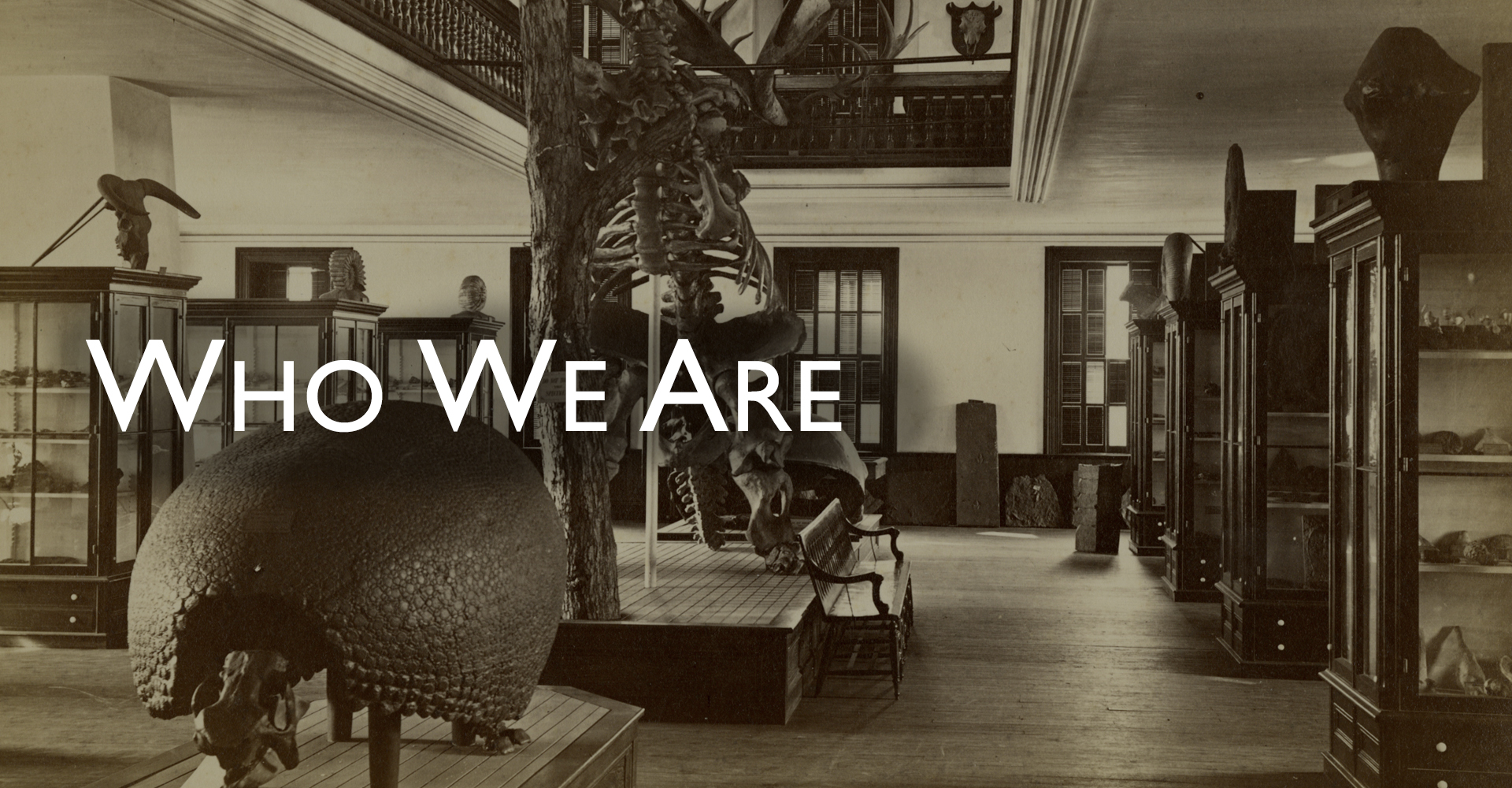
We are the cradle of the Modern American Museum.
The Joe Webb Peoples Museum of Natural History in Exley Science Center of Wesleyan University, is based in the Department of Earth & Environmental Sciences. The Museum is named after Professor Joe Webb Peoples (1908-2000), who was a strong advocate for the museum’s and collections’ role in teaching and science outreach. The Museum was established in 1970 as a second iteration of the Wesleyan Museum in Judd Hall (1871-1957). In 2017, a group of students and faculty initiated a project to revive the surviving collections by securing the collections, recovering lost data, cataloging the specimens and designing exhibitions.
The earliest natural history collections at Wesleyan University predate the university’s founding in 1831. Many specimens were collected by Methodist missionaries that travelled abroad and during class field trips. Exchanges of material with local colleges and societies helped enrich the natural history collections. In 1871, the collections were moved to the newly-built Orange Judd Hall of Natural Sciences, named after its main benefactor. Judd’s bequest of $65,000 formed a major part of the funding for Judd Hall, one of the nation’s first buildings dedicated to the education in the natural sciences. The museum’s first curator, ichthyologist George Brown Goode, later became the assistant secretary and director of the Smithsonian Institution in charge of the United States National Museum (1873-1896).
George Brown Goode, Wesleyan class of 1870, is hailed as the Father of the Modern American Museum. His training as founding curator at the Wesleyan Museum proved essential in laying the philosophical and technical foundations that led him to revolutionise natural history museums around the world. He developed a museum philosophy that shook the museum world, and instigated change from traditional cabinets of curiosities to the modern museum with a threefold structure that we are familiar with — collection, research and public education. Despite the consuming work as director of the Smithsonian, he was also instrumental in the founding of the Field Museum in Chicago and the National Geographic Society.
The Wesleyan Museum at Judd Hall housed over 100,000 specimens of natural history and ethnology and was deemed one of the “institutions of superior education” by the Bureau of Education in Washington DC in 1880. The Museum generated such public interest that curators called it “one of the ornaments and attractions of the University”. Many duplicate specimens in Wesleyan’s collections, including fossils from Connecticut localities, were offered in exchange for material from private collectors and other institutions, including the Harvard Museum of Comparative Zoology and the Yale Peabody Museum of Natural History.
When the museum’s last full-time curator, Samuel Ward Loper, died in 1910, no attempt was made to secure a successor. In the 1957, due to waning interest in observational sciences, the museum was closed. The museum space was converted for use by laboratory sciences considered vital to the operation of a modern university. Many specimens were sent off to other institutions. Items remaining at Wesleyan were stored under uncontrolled conditions across campus, including in departmental offices, underground tunnels and attics. Many objects have been stolen, lost due to storage under unsuitable conditions, or irreparably damaged due to vandalism. In 1970, most of the collections were moved into the current Museum in the then newly built Exley Science Center and storage rooms in the building.

Orange Judd Hall of Natural Science, was one of the earliest buildings in the US built for education in the natural sciences. It housed two stories of museum display until 1957.

This photo of a now lost Ward's cast of Giant Ground Sloth (Megatherium sp.) inspired the museum revival project in 2017.

Display of large minerals in the museum today.





